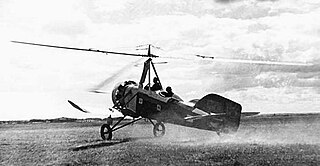Related Research Articles
The Aichi AB-1 was a result of a 1926 government call for a small, Japanese-built, civil transport biplane able to operate from land or water. It won the contest in both roles but did not reach production as airlines moved from biplanes to monoplanes. Nonetheless, it remained in commercial use well into the 1930s.
The Nakajima P-1 was a 1930s Japanese single engine, single seat biplane intended for night mail flights, derived from the Nakajima E4N3 Naval reconnaissance seaplane. Nine were built.
The Junkers T 23 was a two-seat, single-engined experimental training aircraft, built in Germany in the early 1920s. It could be configured either as a parasol winged monoplane or as a biplane to compare handling characteristics. 4 were constructed.
The Wendt W-2 Swift was a two-seat, single-engine, braced high-wing monoplane built in the United States just before World War II. Only one was built.
The Corcoran 65-1 was a motor glider of very unusual configuration, a twin engine biplane. It was designed and built in the United States in the 1960s; only two were completed.

The Pander P-1 and P-2 were close to-identical single engine Dutch sports aircraft with tandem seats and a parasol wing, first flying in 1929. Only two were built.
The Lioré et Olivier LeO 8, Lioré et Olivier LeO 8-Cau 2 or Lioré et Olivier LeO 8 CAN 2 was a French two seat, parasol wing monoplane night fighter and reconnaissance aircraft, built in 1923.

The TsAGI A-4, sometimes anglicised as CAHI A-4 or ZAGI A-4, was an early Russian autogyro, influenced by Cierva designs and delivered in small numbers to the Soviet Air Force in 1934.

The Caproni Ca.95 was a large, three engine, long range, heavy bomber prototype built in Italy in 1929. It could carry a 1,600 kg (3,500 lb) bomb load and had three defensive gun positions. Only one was built.

The Lachassagne AL 5 was a French low power, single seat sports aircraft with novel, in-flight variable camber wings and tailplane. It first flew in 1930; at least two were built.
The Leduc RL-12 was a French low power, economical, parasol wing, single seat aircraft. First flown in July 1939, its development was halted by World War II.

The Nieuport-Delage NiD 580 R.2 was a contender for a French government contract for a long range, two seat reconnaissance aircraft, issued in 1928. There were eight prototypes in the 1931-2 contest and the NiD 580 was not selected for production.

The Hanriot H.25 was a French, single-engined, six passenger airliner built in 1926. Only one was flown.
The Silesia S-4 was a Polish, low-power parasol wing aircraft built in 1925. After an engine change and airframe modifications it became one of the Silesian Aeroclubs fleet. It was lost in a take-off accident in 1931 and was the last Silesia aircraft to fly.
The Gabriel Śląsk (Silesia) was a Polish light aircraft designed and built by an amateur in the mid-1930s. After two flights the Polish authorities banned further development.
The Yackey Monoplane was an American three seat parasol monoplane flown in the late 1920s. Two prototypes had some success in the 1927 New York - Spokane National Air Derby and orders were placed but a crash killed its designer and ended production.

The Wiley Post Model A is a U.S. two seat sports biplane, built in small numbers in the 1930s.
The Kawanishi K-10 Transport was a 1920s Japanese passenger and mail transport. Two were built, one briefly serving a route between cities in Japan, Korea and China.

The Kawanishi K-6 was a passenger-carrying biplane floatplane, built in Japan in the 1920s. The sole example took part in an around Japan flight then flew as a transport with Japan Aviation.
The Kawanishi K-3 was a Japanese, fast, multi-purpose civil transport aircraft from the early 1920s. Despite its good performance it was eclipsed by the release of Army surplus machines and only one was built.